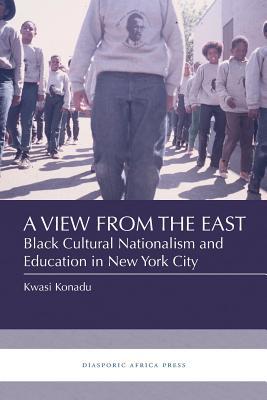A View from The East represents a second edition built upon expanded archival research and a contextualizing of the organization within the African American civil rights and black power movements. At the heart of The East was Uhuru Sasa Shule, an independent African-centered school whose curriculum and pedagogy were rooted in Kawaida philosophy and concepts of education for self-reliance. In addition, The East became a center for the arts. On weekends, it served as a literary salon and hosted concerts by black musicians. Many of the great jazz artists and poets performed there, as it became a well-known and highly sought-after venue. With fresh insight and great detail, Kwasi Konadu excavates the history of The East, exploring the confluence of cultural nationalism, education, economic self-sufficiency, and the arts during the Black Power period. Drawing on extensive interviews and primary research, Konadu vividly brings to life the people and events that shaped this remarkable institution and outlines the rich lessons it provides for future community building organizations.

A View from The East represents a second edition built upon expanded archival research and a contextualizing of the organization within the African American civil rights and black power movements. At the heart of The East was Uhuru Sasa Shule, an independent African-centered school whose curriculum and pedagogy were rooted in Kawaida philosophy and concepts of education for self-reliance. In addition, The East became a center for the arts. On weekends, it served as a literary salon and hosted concerts by black musicians. Many of the great jazz artists and poets performed there, as it became a well-known and highly sought-after venue. With fresh insight and great detail, Kwasi Konadu excavates the history of The East, exploring the confluence of cultural nationalism, education, economic self-sufficiency, and the arts during the Black Power period. Drawing on extensive interviews and primary research, Konadu vividly brings to life the people and events that shaped this remarkable institution and outlines the rich lessons it provides for future community building organizations.